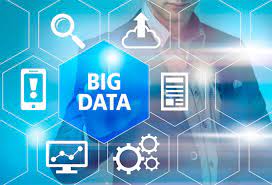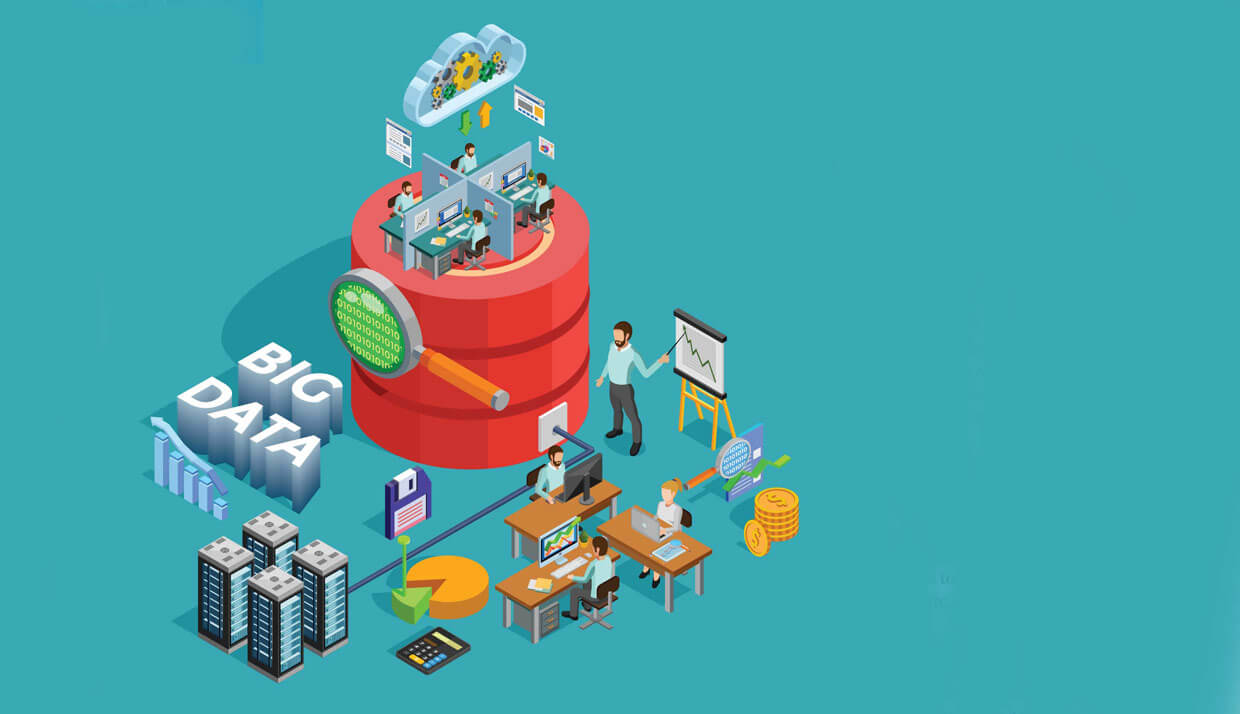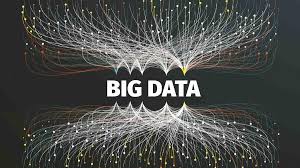Hello!
 Big data has been a key part of the tech scene since its inception. The strategy and use cases have changed significantly from the beginning.
Big data has been a key part of the tech scene since its inception. The strategy and use cases have changed significantly from the beginning.
Organizations that wish to improve their customer understanding and maximize their operational potential have become more reliant on big data, especially with the rise of edge computing, streaming, IoT devices, and cloud computing.
Below are some current big data trends. Also, see what you can expect for big data in the future.
What’s Trending In Big Data?
- Greater reliance on cloud storage
- Data fabric technology is growing
- Collection of ethical customer data
- AI/ML-powered automation
- The evolution and use of vector similarity searches
 Gitenstein stated that cloud solutions are the new standard, especially hybrid cloud solutions for workloads that require multiple storage environments. As data grows, enterprises will need the flexibility and scalability that cloud services offer.
Gitenstein stated that cloud solutions are the new standard, especially hybrid cloud solutions for workloads that require multiple storage environments. As data grows, enterprises will need the flexibility and scalability that cloud services offer.
The cloud makes it easier to access information in real-time and puts it at the fingertips of more people. The cloud can be used to create a new database, application, spin up servers, or build new clusters. Cloud computing also consolidates resources so that you don’t need to buy additional servers or have IT staff install them.
Companies are increasingly relying on cloud storage and have begun to use other cloud-based solutions such as data lakes and cloud-hosted data warehouses.
Also read: How to Start An E-commerce Business From Scratch
Stronger Reliance On Cloud Storage
Organizations are flooded with big data from all directions. With the advancement of tech (streaming data, observational and unrelated transactions), and a greater understanding of how different data types can be strategically used, large data storage capacity has become a problem.
 Traditional on-premises storage is no longer sufficient to store the petabytes or terabytes of data that flow into businesses. Cloud and hybrid cloud solutions are being increasingly chosen because of their simplicity and scalability.
Traditional on-premises storage is no longer sufficient to store the petabytes or terabytes of data that flow into businesses. Cloud and hybrid cloud solutions are being increasingly chosen because of their simplicity and scalability.
Ben Gitenstein is the VP of Product at Qumulo. This unstructured data management platform offers storage and other benefits for big data companies.
Joe DosSantos is chief data officer at Qlik, an analytics company that ranks among the Fortune 500. He believes this increased focus will help organizations reach new real-time data goals.
DosSantos stated that modern data warehouses have been rising in popularity, as well as data lakes that take advantage of the cloud’s cost structure, scalability, and flexibility. Access to real-time, more relevant data is possible when combined with data catalogs.
The Growth Of Data Fabric Technology
Data fabrics, which are gradually being developed in the cloud to expand the available space for digital transformation within an enterprise, are another important development. They are being adopted by organizations that need more real estate and greater accessibility for their growing collections of big data.
They can store and retrieve the data they need across a variety of network infrastructures including cloud, hybrid, on-premises, and cloud.
Robert Eve is a former senior data management strategist at TIBCO. This top-ranked platform for data analytics and management emphasizes the importance of data fabrics in organizations that want both real-time analysis and data democratization.
 Eve stated that data fabrics, modern distributed data architectures provide enterprises with a competitive edge that allows them to be most impactful using their data.
Eve stated that data fabrics, modern distributed data architectures provide enterprises with a competitive edge that allows them to be most impactful using their data.
It accelerates time to value, allowing for distributed cloud, hybrid, and on-premises data, regardless of its location, and delivering it at a business’s pace. This technology allows business users to have all the data they need to make better business decisions.
Data fabrics are a way for enterprises to adapt to new technologies and data, while still ensuring that the data is secure. It is also flexible and allows organizations to adopt new data and technology advances such as data science, real-time data, and cloud faster to stay ahead in the market.
Data fabric technology is also a hot topic in the worlds of artificial intelligence (AI), machine learning (ML), automation for big data. This is mainly because distributed design discourages data silos that make machine learning and data annotation more difficult.
Scott Gnau is the VP of data platforms for InterSystems. This company specializes in data integration and data analytics. He explains that smart data fabrics provide this functionality. Data fabrics are crucial to data quality, which is essential for automation.
 Gnau stated that the next generation of innovation and automated systems must be built upon strong data foundations.
Gnau stated that the next generation of innovation and automated systems must be built upon strong data foundations.
Emerging technologies such as artificial intelligence or machine learning require large amounts of accurate, current, and clean data from multiple business silos to function.
“But, seamless access across multiple data silos in a global company is extremely difficult. With more data coming in from different sources, organizations need architectures that combine the composable stack with distributed data to provide actionable real-time insight.
Smart data fabrics are becoming increasingly popular with organizations of all sizes because they provide the ability to connect, integrate and transform data, as well as manage and utilize data assets. This allows the business to achieve its business goals quicker and more efficiently than traditional approaches like data lakes.
Ethical Customer Data Collection
A lot of the growth in big data in recent years has been due to consumer data, or data that is continuously connected to consumers as they use tech like streaming devices, IoT devices, and social media.
 Personal data regulations such as GDPR require companies to manage personal data with care.
Personal data regulations such as GDPR require companies to manage personal data with care.
However, compliance can become incredibly difficult when companies don’t know where their data comes from or what sensitive information is stored within their systems. Software and best practices are increasingly being used by companies to collect ethical customer data.
Noting that large organizations that used to collect and sell personal data are changing their ways, it is important to remember that consumer data will become more difficult and more expensive to buy. Smaller companies are opting for first-party data collection, or gathering their data to comply with data laws, and also to save money.
Christian Adams, a cofounder of Coffee Affection, a blog that caters to baristas, said, “With big tech making privacy a major selling point recently, it will be harder for data to come by.”
What happens to the price when something is rarer? It goes up. As the next few years progress, you can expect to see first-party data grow in size. This means that companies will need to collect data themselves if they want it.
Artificial Intelligence/ML-Powered Automation
 Big data analytics is a key trend in big data. It can be used to power AI/ML automation for both consumer-facing and internal purposes. These automated tools wouldn’t have the necessary training data to replace the human actions of an enterprise without big data.
Big data analytics is a key trend in big data. It can be used to power AI/ML automation for both consumer-facing and internal purposes. These automated tools wouldn’t have the necessary training data to replace the human actions of an enterprise without big data.
Jared Peterson (SVP of Engineering at SAS), a leading analytics and AI company, said that “AI and machine-learning specialties are expanding at a rapid rate.”
There are many reasons and multiple ways to view the expansion. The first is advances in deep learning and the computing power required to make them possible (e.g. GPUs) have fueled a revival in computer vision and NLP. These areas have seen a rapid pace of research and publication.
While AI and ML solutions can be exciting by themselves, the automation and workflow shortcuts they allow are game-changing for businesses.
Nir Kaldero is the global executive head of data science at NEORIS. This digital transformation company sees both AI and automation in one:
“AI is powerful by itself, but AI + Automation is the opportunity to create smart systems that automatically seamlessly react to technology to achieve a higher-level intelligence and complete end-to-end services.”
Expect to see increased predictive and real-time analytics opportunities in all aspects of workflow automation, customer service chatbots, and more as big data continues to grow for AI/ML solutions.
Also read: Google Unveils Experimental Tool Sparkify
The Evolution Of Vector Similarity Search
 Vector similarity search is perhaps the most intriguing trend in the future of big data. This new method to find and retrieve data using deep learning and smart data practices is probably the least known.
Vector similarity search is perhaps the most intriguing trend in the future of big data. This new method to find and retrieve data using deep learning and smart data practices is probably the least known.
Pinecone founder and CEO Edo Liberty explains why vector similarity searches are growing and what this will mean for data results in the future.
Liberty stated that vector similarity search is an innovative way to search through large amounts of data. It indexes and searches vector representations of data, which is a departure from traditional search methods.
It uses deep learning models in combination with state-of-the-art algorithms to locate items by their conceptual meanings, rather than keywords and properties.
“Machine Learning Teams are using vector search to dramatically improve results for semantic search, image/audio searches, recommendation systems, and feed ranking.
Thank you!
Join us on social networks!
See you!






